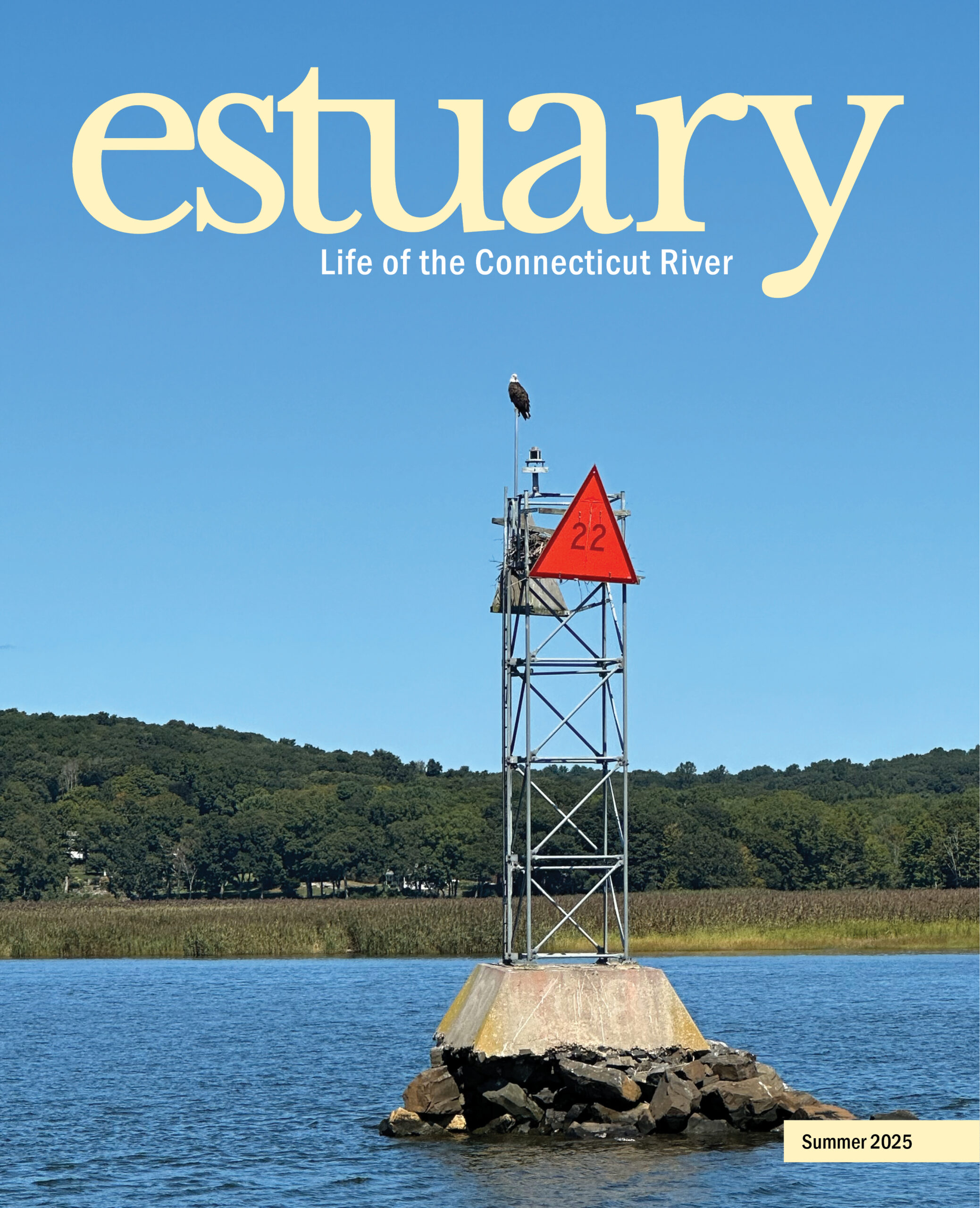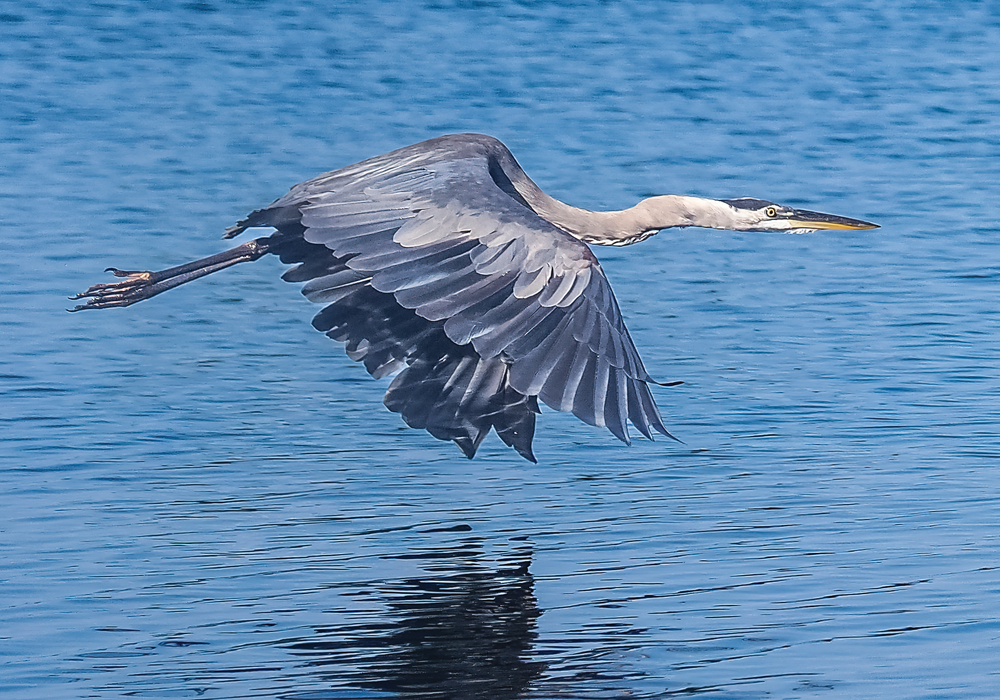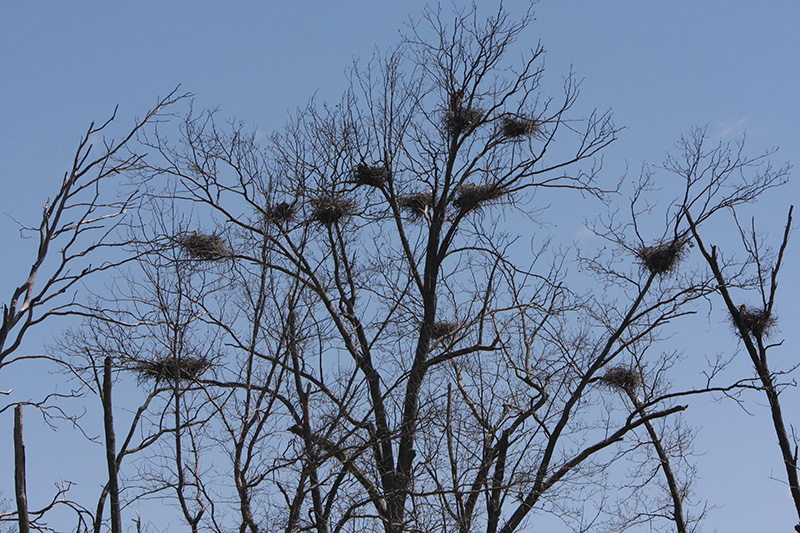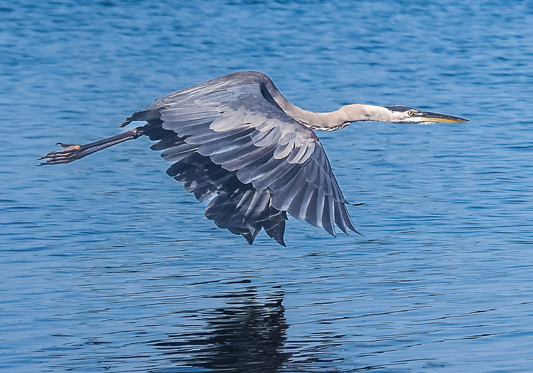 This article appears in the Summer 2025 issue
This article appears in the Summer 2025 issue

Great Blue Heron Rookeries

Great blue herons—with their six-foot wingspan—are the largest herons in North America. Image credit: Ray Uzanas
Great blue heron’s rookeries can be hard to reach for a good reason. These big birds don’t like intruders, especially during their nesting season. But if you can get within viewing distance of one, don’t miss the opportunity. They are an impressive bird to see and hear.
Dressed in attractive blue-grey plumage, great blue herons (Ardea herodias) are distinguished by their rust-colored neck, reddish thighs, and a black stripe above their eye. The calls and sounds coming from their rookeries are unlike anything you’ve heard before. They utter deep, harsh squawks—the type of call that you might hear on the movie set of Jurassic Park.
Great blue herons are the largest herons in North America. Adults stand four feet tall and have a six-foot wingspan, a long neck, and a wicked dagger-like bill which they use to either spear or grab fish, frogs, and snakes. Tough and resilient, they can live fifteen years or more.

Great blue heron nests in the Folly Brook Natural Area, Wethersfield. Image credit: Great Meadows Conservation Trust
The breeding season in New England typically starts in late February or early March. Before courtship begins, males select the nesting site, usually in trees, twenty to sixty feet above ground or water. They gather much of their nesting material from either the ground or from unguarded and abandoned nests.
“This is the time to watch their elaborate courtship dances and displays as male great blue herons try to impress a prospective mate,” explained Maggie Jones, former head of Denison Pequotsepos Nature Center and an accomplished birder from Mystic, Connecticut. “They will also bring ‘gifts’ of sticks and nest materials, a further indication of their suitability as a mate, their physical fitness, and ability to be a good provider,” she said. If a match is successful, male and female herons have been observed stretching their necks skyward, rubbing their bills on each other’s feathers, and pointing their heads down, signifying they’re interested in mating.
Meanwhile, the female great blue heron will complete the nest by fashioning a saucer-shaped nest cup, lining it with pine needles, moss, reeds, dry grass, or small twigs—according to allaboutbirds.org—before laying two to six eggs. Incubation takes about twenty-seven days, and the nesting period forty-nine to eighty-one days before the chicks fledge. Great blue herons remain monogamous during the breeding season but will find new mates each year.
A Perfect Rookery
One notable great blue heron rookery is in Wethersfield, Connecticut. It’s in a remote part of the Folly Brook Natural Area, in the town of Wethersfield but owned by the City of Hartford, on the northern edge of the Great Meadows, a beautiful, protected 4,500-acre floodplain on the Connecticut River six miles below the capital city.
It is here that heron families may have picked the perfect site, accommodating up to twenty-five nests high in trees in a swampy, small, forested part of the floodplain. As a special treat for birders, the Great Meadows Conservation Trust (GMCT), a nonprofit land trust that owns land near the rookery, offers popular “Brisk Winter Walks” to view the nesting site and other parts of the floodplain, when the foliage is off the trees.
“We don’t advertise it as a ‘Rookery Walk,’ but we always take the opportunity to point out the eagle and heron nests while we are there,” explained Tim Lewis, president of GMCT.
Since its inception in 1968, the Great Meadows Conservation Trust has been a leader in protecting and preserving the Great Meadows. In 1973, for example, then-GMCT president Eleanor Buck Wolf and others played a key role in persuading Wethersfield, Glastonbury, and Rocky Hill—which all border the meadowlands—to reject a request from an out-of-state developer to build a sprawling $50 million horse racing track, a proposal that if approved, would have changed the landscape forever.

Aerial view of the Great Meadows along the Connecticut River. Image credit: Great Meadows Conservation Trust.
Reflecting on that pivotal moment, Lewis said, “Our mission today is more than preventing harmful development. It is to promote the ideas of conservation and environmental awareness to our members and the community at large. We do that by engaging the public in numerous volunteer and recreational activities, like hosting garden seminars, teaching participants how to plant native shrubs and plants, and offering guided birdwatching tours, to name a few.”
If you cannot catch a glimpse of the rookery, the entire Great Meadows floodplain is rich in wildlife. In 2017 Audubon Connecticut designated the Great Meadows as an Important Bird Area, recognizing its value for nesting and migratory birds. Larry Lunden, GMCT’s land management chair and member of the Hartford Audubon Society, said more than 260 species of birds have been seen in the meadowlands.
Other great blue heron rookeries in Connecticut can be found in Simsbury in a wildlife sanctuary behind Iron Horse Boulevard; in Portland along the Connecticut River; in Norwich near the intersection of Route 395 and Scotland Road; and in Greenwich on Great Captain’s Island. Enjoy!
Bill Hobbs is a contributing nature writer for Estuary magazine and the Times newspapers in New London, Connecticut. He welcomes your comments at whobbs246@gmail.com.

